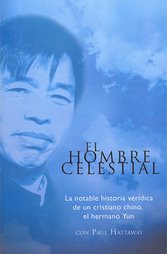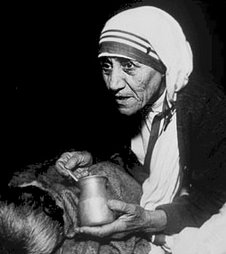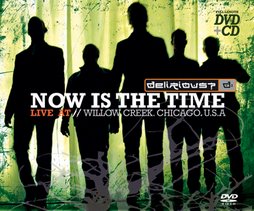Un vicio caro es el amor
El humo es espeso... no me deja ver, no creo que ya vaya a volver.
Wednesday, August 27, 2008
Posted by
Ceci
at
5:52 PM
0
comments
![]()
Me dedicaron esta cancion de liquids, esta muy padre, me gusta mucho el ritmo y las voces!!!
Se llama "desde que".
Te sentì venir como en una visiòn, ya estas aqui y mi mente explotò. desde que tu estas conmigo todo brilla con otro color. Desde Que.
Volemos tu y yo en esta inmensidad, no hay droga mejor que tus brazos estar.
Desde que tu estas conmigo veo que ahora brilla mas el sol, desde que estoy contigo no se que paso, que te di mi corazon.
Y ahora voy caminando junto a ti, somos dos, nunca sola vas a ir. y ahora voy sonriendo junto a ti, somos dos juntos vamos a vivir.
Voy pensando en ti, cuando lejos estoy, hoy pensaste en mi y mi mente exploto. desde que estas conmigo la musica tiene otro sabor.
Posted by
Ceci
at
5:35 PM
0
comments
![]()
Una de mis canciones favoritas,
Yo se que aun no me conoces,
que soy un poco timido al buscarte,
que alguna vez me viste
que hasta me sonreiste
pero talvez fue solo un gesto amable
Yo sueño con que alguna vez me quieras
por descubrir de cerca tu mirada
que sientas mi pasiòn
que salgas al balcòn
la noche que te lleve serenata
por eso rezo
que tu de mi te enamores
rezo,
y que mi vida decores
con tus gustos tus colores
rezo.
Hoy rezo
para que ya no sea un sueño,
rezo o algun ridiculo empeño
por poderte dar un beso rezo.
Yo sufro cuando no se que decirte
cuando de mi se esconden las palabras
y espero con paciencia
que adviertas mi presencia
y pido a Dios que pronto tu me ames
por eso rezo
que tu de mi te enamores
rezo,
y que mi vida decores
con tus gustos tus colores
rezo.
Hoy rezo
para que ya no sea un sueño,
rezo o algun ridiculo empeño
por poderte dar un beso rezo.
Posted by
Ceci
at
5:27 PM
0
comments
![]()
Sunday, August 24, 2008
Saturday, August 23, 2008

Lucha libre (Spanish for "free fight") is a term used in Mexico and other Spanish-speaking areas to refer to a certain form of professional wrestling involving varied techniques and moves. Outside of these areas, the term is synonymous with the professional wrestling performed in Mexico and other Latin American countries.
Mexican wrestling is characterized by rapid sequences of holds and moves, as well as spectacular high-flying moves, many of which have been adopted in the United States, and colorful masks. Lucha libre performers are known as luchadores (singular luchador).
In 1942, lucha libre would be forever changed when a silver-masked wrestler, known simply as El Santo (The Saint), first stepped into the ring. He made his debut in Mexico City by winning an 8-man battle royal. The public became enamored by the mystique and secrecy of Santo's personality and he quickly became the most popular luchador in Mexico. His wrestling career spanned nearly five decades, during which he became a folk hero and a symbol of justice for the common man through his appearances in comic books and movies, while the sport of Lucha Libre received an unparalleled degree of mainstream attention.[2]
Other legendary luchadores who helped popularize the sport include; Gory Guerrero who is credited with developing moves and holds which are now commonplace in professional wrestling; Blue Demon, a contemporary of Santo and possibly his greatest rival; and Mil Máscaras (A Thousand Masks) who is credited with introducing the high flying moves of lucha libre to audiences around the world. He achieved international fame as one of the first high-flyers, something he was not considered in Mexico where he fell under the mat-power category.[3][4][5]
Lucha libre style of wrestling
Rey Mysterio hitting the "619" on Eddie GuerreroLuchadores are traditionally more agile and perform more aerial maneuvers than professional wrestlers in the U.S. who, more often, rely on power moves and strikes to subdue their opponents. The difference in styles is due to the independent evolution of the sport in Mexico beginning in the 1930s and the fact that luchadores in the cruiserweight division (peso semicompleto) are often the most popular wrestlers in Mexican lucha libre.[6] Luchadores execute high flying moves characteristic of lucha libre by utilizing the wrestling ring's ropes to catapult themselves towards their opponents, using intricate combinations in rapid-fire succession, and applying complex submission holds. Lucha libre has several different weight classes, many catered to smaller agile fighters, who often make their debuts in their mid-teens. This system enables dynamic high-flying luchadores such as Rey Mysterio, Jr., Juventud Guerrera and Mistico, to develop years of experience by their mid-twenties.[7] A number of prominent Japanese wrestlers also started their careers training in Mexican lucha libre before becoming stars in Japan. These include Gran Hamada, Satoru Sayama, Jushin Liger, and Último Dragón. With so many weight classes, Mexico has the largest number of professional wrestlers in the world.
A lucha libre tag team matchLucha libre is also known for its tag team wrestling matches. The teams are often made up of three members, instead of two as is common in the U.S. These three man teams participate in what are called trios matches, for tag team championship belts. Of these three members, one member is designated the captain. A successful fall in a trios match can be achieved by either pinning the captain of the opposing team or by pinning both of the other members. A referee can also stop the match because of "excess punishment". He can then award the match to the aggressors. Falls often occur simultaneously, which adds to the extremely stylized nature of the action. In addition, a wrestler can opt to roll out of the ring in lieu of tagging a partner or simply be knocked out of the ring, at which point one of his partners may enter. As a result, the tag team formula that U.S. tag matches tend to follow doesn't apply to lucha libre because the race to tag isn't a priority. There are also two-man tag matches (parejas) as well as "four on four" matches (atomicos).[8]
Masks
The mask of Blue DemonMasks (mascaras) have been used dating back to the beginnings of lucha libre and have a historical significance to Mexico dating back to the days of the Aztecs. Early masks were very simple with basic colors to distinguish the wrestler. In modern lucha libre, masks are colorfully designed to evoke the images of animals, gods, ancient heroes, and other archetypes, whose identity the luchador takes on during a performance. Virtually all wrestlers in Mexico will start their careers wearing masks, but over the span of their careers a large number of them will be unmasked. Sometimes, a wrestler slated for retirement will be unmasked in his final bout or at the beginning of a final tour, signifying loss of identity as that character. Sometimes, losing the mask signifies the end of a gimmick with the wrestler moving on to a new gimmick and mask. The mask is considered "sacred" to a degree, so much so that fully removing an opponent's mask during a match is grounds for disqualification.[9]
During their careers, masked luchadores will often be seen in public wearing their masks and keeping up the kayfabe of Lucha Libre, other masked wrestlers will interact with the public and press normally, however, they will still go to great lengths to conceal their true identity; in effect, the mask is synonymous with the luchador. El Santo continued wearing his mask after retirement, revealed his face briefly only in old age, and was buried wearing his silver mask.
More recently, the masks that luchadores wear have become iconic symbols of Mexican culture. Contemporary artists like Francisco Delgado and Xavier Garza incorporate wrestler masks in their paintings.[10]
Although masks are a feature of lucha libre, many Americans wrongly assume that every Mexican wrestler uses one. This is false and there have been several non-masked wrestlers who have been successful, particularly Tarzan Lopez and Perro Aguayo. Formerly masked wrestlers who lost their masks, such as Satanico, Cien Caras and others, have had continued success despite the mask losses
Variants
Máscara contra máscara ("mask versus mask"): two masked luchadores bet their masks, the loser is unmasked by the winner, and his real name is often revealed as well.
Máscara contra cabellera ("mask versus hair"): a masked wrestler and an unmasked one compete, often after the unmasked one has lost his mask to the masked one in a prior bout. If the masked luchador wins, the unmasked one shaves his head as a sign of humiliation. If the unmasked luchador is the winner, he keeps his hair and the loser is unmasked.
Cabellera contra cabellera ("hair versus hair"): the loser of the match has his head shaved bald. This can occur both between unmasked wrestlers and between masked wrestlers who have to remove their mask enough to be shaved after the match
Other characteristics
A wrestling match between técnico Mistico and rudo MephistoLuchadores are traditionally divided into two categories, rudos ("bad guys", or "heels", literally "rude ones"), who bend or break the rules, and técnicos (the "good guys", or "faces", literally "technicians"), who play by the rules and their moves are much more complex and spectacular. "Técnicos" tend to have very formal combat styles, close to Greco-Roman wrestling and martial arts techniques, where as "rudos" tend to be brawlers. Técnicos playing the "good guy" role, and rudos playing the "bad guy" role is very characteristic of Mexican lucha libre, which differs from U.S. professional wrestling, where many technical wrestlers play the role of heels, and many brawlers play as "faces" (e.g., Stone Cold Steve Austin).[13] Although rudos often resort to using under-handed tactics, they are still expected to live up to a luchador code of honor. For instance, a luchador who has lost a wager match would prefer to endure the humiliation of being unmasked or having his head shaved rather than live with the shame that would come from not honoring his bet. Rudos have also been known to transition into técnicos after a career defining moment, as was the case with Blue Demon, who decided to become a técnico after his wrestling partner, Black Shadow, was unmasked by the legendary Santo. Tag teams are sometimes comprised of both rudos and técnicos in what are called parejas increibles (incredible pairings). Parejas increibles highlight the conflict between a luchador's desire to win and his contempt for his partner.[14]
Luchadores, like their foreign counterparts, seek to obtain a campeonato ("championship") through winning key wrestling matches. Since many feuds and shows are built around luchas de apuestas ("matches with wagers"), title matches play a less prominent role in Mexico than in the U.S. Titles can be defended as few as one time per year and wrestlers usually only wear their belts during big events and title defenses.
Lucha libre uses a more specific weight class system to classify titles. Popular weight classes include; heavyweight, light-heavyweight, welterweight and middleweight. Lightweight and super-lightweight titles are also used. The "Cruiserweight" division is often associated with the lucha libre style of wrestling, even though in Mexico, the term light-heavyweight (peso semicompleto) is used due to a different weight class system. In recent years, weight classes have been mostly nominal and there are occasions when a wrestler will have titles in two different weight classes. However, title matches are still major events and many shows are built around them.
The two most popular lucha libre promotions are Consejo Mundial de Lucha Libre (CMLL), which was founded in 1933, and Asistencia Asesoría y Administración (AAA).
Lucha libre is currently experiencing a boom in popularity due to the emergence of a new generation of stars, most notably, a masked wrestler named Mistico, whose high-flying style and technique is attracting record crowds in Mexico.
Variants
Máscara contra máscara ("mask versus mask"): two masked luchadores bet their masks, the loser is unmasked by the winner, and his real name is often revealed as well.
Máscara contra cabellera ("mask versus hair"): a masked wrestler and an unmasked one compete, often after the unmasked one has lost his mask to the masked one in a prior bout. If the masked luchador wins, the unmasked one shaves his head as a sign of humiliation. If the unmasked luchador is the winner, he keeps his hair and the loser is unmasked.
Cabellera contra cabellera ("hair versus hair"): the loser of the match has his head shaved bald. This can occur both between unmasked wrestlers and between masked wrestlers who have to remove their mask enough to be shaved after the matc
Other characteristics
A wrestling match between técnico Mistico and rudo MephistoLuchadores are traditionally divided into two categories, rudos ("bad guys", or "heels", literally "rude ones"), who bend or break the rules, and técnicos (the "good guys", or "faces", literally "technicians"), who play by the rules and their moves are much more complex and spectacular. "Técnicos" tend to have very formal combat styles, close to Greco-Roman wrestling and martial arts techniques, where as "rudos" tend to be brawlers. Técnicos playing the "good guy" role, and rudos playing the "bad guy" role is very characteristic of Mexican lucha libre, which differs from U.S. professional wrestling, where many technical wrestlers play the role of heels, and many brawlers play as "faces" (e.g., Stone Cold Steve Austin).[13] Although rudos often resort to using under-handed tactics, they are still expected to live up to a luchador code of honor. For instance, a luchador who has lost a wager match would prefer to endure the humiliation of being unmasked or having his head shaved rather than live with the shame that would come from not honoring his bet. Rudos have also been known to transition into técnicos after a career defining moment, as was the case with Blue Demon, who decided to become a técnico after his wrestling partner, Black Shadow, was unmasked by the legendary Santo. Tag teams are sometimes comprised of both rudos and técnicos in what are called parejas increibles (incredible pairings). Parejas increibles highlight the conflict between a luchador's desire to win and his contempt for his partner.[14]
Luchadores, like their foreign counterparts, seek to obtain a campeonato ("championship") through winning key wrestling matches. Since many feuds and shows are built around luchas de apuestas ("matches with wagers"), title matches play a less prominent role in Mexico than in the U.S. Titles can be defended as few as one time per year and wrestlers usually only wear their belts during big events and title defenses.
Lucha libre uses a more specific weight class system to classify titles. Popular weight classes include; heavyweight, light-heavyweight, welterweight and middleweight. Lightweight and super-lightweight titles are also used. The "Cruiserweight" division is often associated with the lucha libre style of wrestling, even though in Mexico, the term light-heavyweight (peso semicompleto) is used due to a different weight class system. In recent years, weight classes have been mostly nominal and there are occasions when a wrestler will have titles in two different weight classes. However, title matches are still major events and many shows are built around them.
The two most popular lucha libre promotions are Consejo Mundial de Lucha Libre (CMLL), which was founded in 1933, and Asistencia Asesoría y Administración (AAA).
Lucha libre is currently experiencing a boom in popularity due to the emergence of a new generation of stars, most notably, a masked wrestler named Mistico, whose high-flying style and technique is attracting record crowds in Mexico.
taken from WIKIPEDIA
Posted by
Ceci
at
1:40 PM
9
comments
![]()
Sunday, August 17, 2008
El sabado fue el relanzamiento de la imagen de la bebida Gladiator de The Coca Cola Co. y fue en la arena Mexico, a donde fui por primera vez, y puedo decir que disfrutè como pocas veces, ya que el gritar y animar a los luchadores que participaron esa noche, fue desestresante, fue como estar en un teatro donde la obra es acerca del enfrentamiento entre el bien y el mal y los espectadores podemos participar y decirle "sus cosas" a los enemigos de nuestro luchador favorito, ademas de ver un espectaculo de acrobacias riesgosas pero emocionantes. La lucha libre mexicana es sensacional, ahora entiendo porque despierta tanto interes en el mundo. Y por supuesto no pude evitar comprar mi playera de "Perras del mal". :):)
Posted by
Ceci
at
1:39 PM
0
comments
![]()
Sunday, August 10, 2008
Posted by
Ceci
at
8:08 AM
0
comments
![]()
Saturday, August 09, 2008
Un viejo árabe vivía en Idaho, Estados Unidos, desde hace 40 años.
Quería plantar patatas en su jardín, pero arar la tierra ya era un
trabajo muy pesado para él.
Su único hijo, Ahmed, estaba estudiando en Francia.
Entonces el anciano decide mandarle un correo-e explicándole el> problema: Querido Ahmed: Me siento mal porque no voy a poder plantar mis> patatas este año. Estoy muy viejo para arar las parcelas. Si tu estuvieras> aquí se que voltearías la tierra por mí. Que Alá esté contigo. Te> quiere, tu papá.>
Al día siguiente recibe un correo-e de su hijo: - Querido papá: Por> todo lo que más quieras, no revuelvas la tierra del jardín. Ahí es donde > tengo escondido aquello. Te quiere, Ahmed.> A eso de las cuatro de la> madrugada, aparecen la Policía local, agentes del FBI, de la CIA y> representantes del Pentágono que dan vuelta a toda la tierra del > jardín buscando materiales para construir bombas, Antrax o lo que sea.> Pero, no encuentran nada y se van.>
Ese mismo día el hombre recibe otro correo de su hijo:> Querido papá: Seguramente la tierra del jardin ya está lista y > podrás plantar las patatas. Es lo mejor que pude hacer desde aquí.> Te quiere tu hijo Ahmed.
Posted by
Ceci
at
6:38 AM
1 comments
![]()
























































